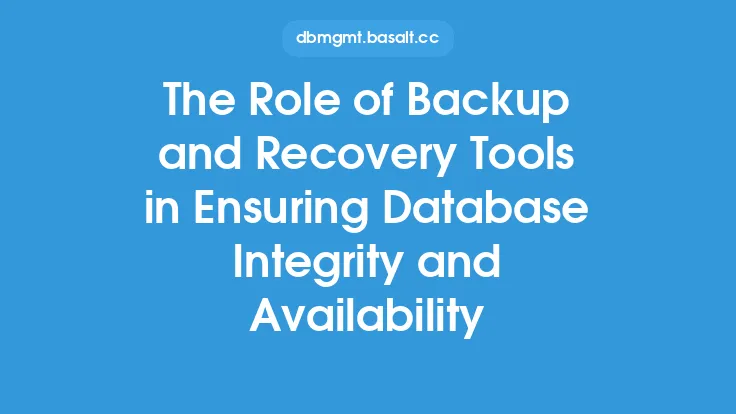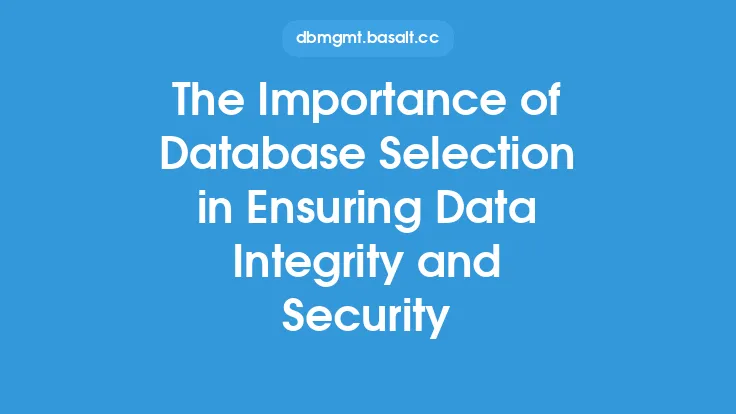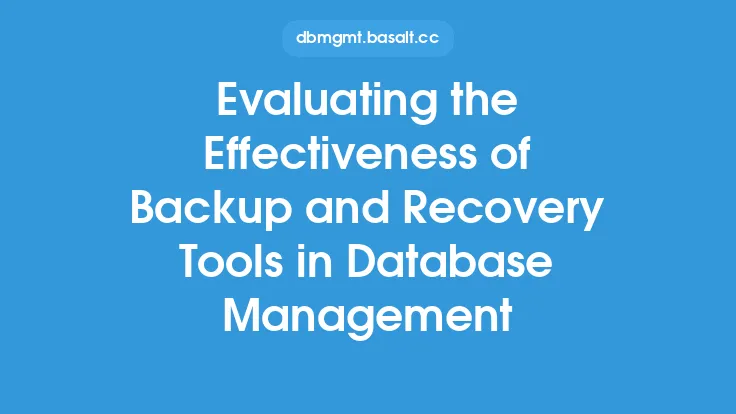In today's digital age, data has become the lifeblood of any organization. The ability to collect, store, and analyze data is crucial for making informed decisions, driving business growth, and staying competitive. However, with the increasing reliance on data comes the risk of data loss, corruption, or unauthorized access. This is where database backup and recovery come into play, and data retention plays a critical role in this process.
Introduction to Data Retention
Data retention refers to the policies and procedures that govern how long data is stored and retained within an organization. In the context of database backup and recovery, data retention is essential for ensuring that data is available and accessible in the event of a disaster or data loss. A well-planned data retention strategy helps organizations to balance the need to retain data for business, regulatory, and compliance purposes with the need to manage storage costs and minimize data proliferation.
Benefits of Data Retention in Database Backup and Recovery
Data retention is critical for database backup and recovery because it ensures that data is available and can be restored in the event of a disaster or data loss. Some of the key benefits of data retention in database backup and recovery include:
- Improved data availability: Data retention ensures that data is available and can be restored quickly in the event of a disaster or data loss.
- Reduced risk of data loss: By retaining data for a specified period, organizations can reduce the risk of data loss and ensure that critical data is not deleted or overwritten.
- Compliance with regulatory requirements: Data retention helps organizations to comply with regulatory requirements and industry standards that mandate the retention of data for specific periods.
- Business continuity: Data retention is essential for business continuity, as it ensures that critical data is available to support business operations in the event of a disaster or data loss.
Key Considerations for Data Retention in Database Backup and Recovery
When developing a data retention strategy for database backup and recovery, there are several key considerations that organizations should take into account. These include:
- Data classification: Organizations should classify data based on its business value, regulatory requirements, and compliance needs.
- Data storage: Organizations should consider the storage requirements for retained data, including the type of storage media, storage location, and data encryption.
- Data retention periods: Organizations should determine the retention periods for different types of data, based on business, regulatory, and compliance requirements.
- Data backup and recovery: Organizations should ensure that retained data is backed up regularly and can be recovered quickly in the event of a disaster or data loss.
Best Practices for Implementing Data Retention in Database Backup and Recovery
To implement data retention effectively in database backup and recovery, organizations should follow best practices such as:
- Developing a clear data retention policy that outlines the retention periods for different types of data.
- Implementing a data classification system to categorize data based on its business value and regulatory requirements.
- Using automated tools to manage data retention, including data backup and recovery.
- Monitoring and reviewing data retention policies regularly to ensure they remain effective and compliant with regulatory requirements.
Common Challenges in Data Retention for Database Backup and Recovery
Despite the importance of data retention in database backup and recovery, organizations often face challenges in implementing effective data retention strategies. Some of the common challenges include:
- Managing data growth: The rapid growth of data can make it challenging for organizations to manage data retention, particularly in terms of storage costs and data proliferation.
- Ensuring compliance: Organizations must ensure that their data retention policies comply with regulatory requirements and industry standards, which can be complex and time-consuming.
- Balancing data retention with data privacy: Organizations must balance the need to retain data with the need to protect data privacy and prevent unauthorized access.
Conclusion
In conclusion, data retention is a critical component of database backup and recovery, as it ensures that data is available and can be restored in the event of a disaster or data loss. By understanding the benefits and key considerations of data retention, organizations can develop effective data retention strategies that balance business, regulatory, and compliance needs. By following best practices and addressing common challenges, organizations can ensure that their data retention policies are effective, compliant, and support business continuity.





